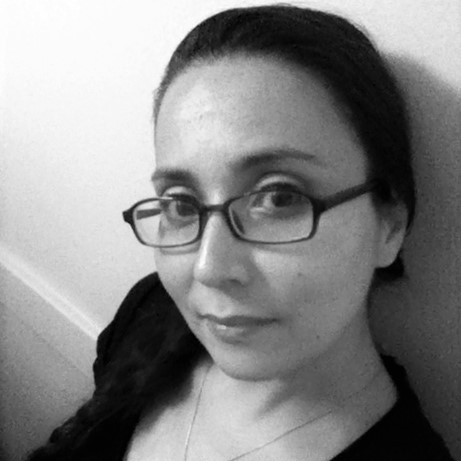Li-Fi: Part 2 - Opportunities and Barriers
By Rebecca Kizer, Alex Mantica, Nate McNeill, Joseph Tobin and Stephen Jones
IEEE Internet Policy Newsletter, September 2018
Discuss this topic on Collabratec:
Light Fidelity (Li-Fi) technology brings many opportunities due to its ability to transmit data at high rates and in new environments. However, along with these opportunities come challenges due to the limitations of Li-Fi technology.
Index Terms - Communication Equipment, Communication Systems, Data Communication, Visible Light Communication
Li-Fi: An Overview-Part1 described how the technology works: incorporating light-emitting diodes (LEDs) pulsating to provide the ‘on-off’ binary function to transmit data; deployment considerations; and modulation schemes to maximize data throughput.
Future Opportunities
Li-Fi technology can currently be applied to two main environments: indoor communications and cellular communications. In the indoor communications environment, data sharing can take place between devices such as desktop and laptop computers, printers, televisions, and cell phones through the visible spectrum, which is currently unlicensed, highly dense, free to utilize, and free from radio frequency noise. For the cellular communications environment, wireless cellular communications can be extended to include visible light communication (VLC) to decrease the congestion of the radio frequency spectrum[4].
Li-Fi is currently believed to have potential as a major building block for the upcoming fifth generation (5G) of heterogeneous mobile networks due to its large unregulated bandwidth, energy efficiency, and improved security[10]. In a Li-Fi cellular network, referred to as an attocell network, the optical cells help with interference problems of the macrocellular network. These can be deployed with pico and femto cell environments, which both enable free user mobility and high throughput[4].
Currently, Wi-Fi cannot be used in operating rooms because radio waves can interfere with medical equipment, and their radiations pose risks for patients. Li-Fi’s use of light could be used in place of Wi-Fi without those risks[4]. There are many devices that do use Wi-Fi in hospitals, such as infusion pumps, defibrillators, lung ventilators, and anesthesia machines. However, when a doctor uses magnetic resonance imaging scanners in addition to Wi-Fi infusion pumps, there is a frequency overlapping problem. Increased use of the radio frequency spectrum in hospitals results in electromagnetic interference (EMI).
Li-Fi can also be used in aircrafts. In the past, the use of Wi-Fi was prohibited inside commercial airplanes for the most part, because it supposedly interfered with the navigational systems of the plane. Today, users can get access to low-speed internet at high costs on commercial aircrafts[4]. Airlines could use Li-Fi technology for delivery of broadband on aircrafts to their passengers to increase their data rates, eliminate most wiring, reduce weight on the plane, and eliminate the risk of radio frequency interference. In addition to providing internet access to passengers, airlines could transmit data from movies, games, and other content to passengers’ screens. Flights with personal screens on the back of every seat currently require wired connections, which has expensive installation costs and adds weight to planes, which impacts fuel usage and flight range. With Li-Fi, these costs would be decreased and much less wiring would be necessary[2].
Wi-Fi And Li-Fi Together
The issues with retransmission pose significant problems to a standalone Li-Fi system. Li-Fi does not have the characteristics needed to alleviate all of Wi-Fi’s issues. However, combining the two technologies together as a hybrid system could be one the most effective uses of Li-Fi, and assist in radio frequency (RF) capacity issues, security issues, and energy consumption issues. Huan, Zhang, Ge and Lu found a way to utilize both Li-Fi technology and Wi-Fi technology. They state, “the proposed technique leverages indoor existing Li-Fi lighting and Wi-Fi infrastructure, and results in a cost-effective and user-convenient indoor accurate localization framework”[5].
The ability for Li-Fi and Wi-Fi to be used as a complementary system can eliminate congestion of the RF spectrum and be much more efficient than standalone Wi-Fi systems. According to Johri, such a hybrid system would be used for receiving signals from a light source (downloading) then using Wi-Fi to send data back (upload). Johri states, “Suppose a person sitting in a room under a LED bulb can enjoy the full 60 GHz spectrum with the greater speed, and if that person wants to move to another room there is no need for any other LED bulb in the other room. Also, as the range of Li-Fi diminishes, the user gets switched to Wi-Fi automatically. With such technology, Li-Fi and Wi-Fi will work together simultaneously and there will be more spectrum utilization”[6].
What Will Keep It from Happening
Because visible light lies within such a high frequency the signal is unable to penetrate solid surfaces (as frequency rises, so does its inability to pass through objects). This creates an incredibly difficult task for Li-Fi to overcome and ultimately eliminates the option of Li-Fi operating in wide-open space areas, high-terrain areas, and metropolitan areas.
According to Soni, Mohta and Choudhury, “A major challenge that comes in the way of Li-Fi is the retransmission of data back to the transmitter”[9]. This leads to issues with uploading and sending data from a device to a Li-Fi system in order to send it out elsewhere. Also, the range at which a user must be from the light source in order to get an effective and quick transmission can be a major drawback for this technology. Johri states “reduction in intensity of the light after a certain point is not allowed in this technology”[6]. This is related to the greater attenuation light has due to the frequency at which it lies.
While all users enjoy the convenience of not being able to physically see the RF spectrum, the same would not be true with Li-Fi. This can be burdensome for users trying to enjoy the speeds and benefits of Li-Fi, but without the need to be near constant light. Passing objects will easily interfere with effective signal transmission. If a human were to walk in the path of the light transmission, the receiver would experience issues with that reception. A need to have constant and continuous light-flow arises. According to Soni, Mohta, and Choudhurry, “the biggest disadvantage is that it needs direct line of sight with the light to work properly and efficiently”[9].
Like other emerging technologies that utilize LED, Li-Fi systems may have potential adverse health consequences. In June of 2016, the American Medical Association (AMA) outlined guidelines to adopt safe LED technology. This is due to the design of LEDs that emit large amounts of blue at a high intensity while appearing as plain white to the naked eye. The appearance is misleading because in reality the high intensity of the light causes worse glare at night time than conventional lighting[3]. Surveys conducted by the AMA have shown the brighter LED lighting resulted in dissatisfaction with sleep quality, excessive sleepiness, and reduced sleep times. Obesity and impaired daytime functioning from lack of sleep can all be associated with the detrimental effects of improper LED technology.
The future of limitless network access and wireline speeds of information will continue to push new and unique technology research. Alexander Graham Bell’s early research to harness the throughput capabilities of light for a communication medium still challenge us today to harness the bandwidth that light will provide in a wireless environment for our growing connectivity demands. How we as engineers and technologist guide the research and deployment of Li-Fi ethically will be incredibly important to the future of high-speed mobile wireless services.
References:
[1] A. Adwani and S. Nagtode, “LI-FI: Information transferring through LEDs,” 2016 International Conference on Electrical, Electronics, and Optimization Techniques (ICEEOT), 2016. Available: https://doi.org/10.1109/ICEEOT.2016.7755065. [Accessed Nov. 20, 2017].
[2] “Aircraft applications with Visible Light Communications and LiFi,” 2015. Available: http://www.fireflywirelessnetworks.com/aircraft.html. [Accessed Nov. 21, 2017].
[3] “AMA Adopts Guidance to Reduce Harm from High Intensity Street Lights,” 2016. Available: https://www.ama-assn.org/ama-adopts-guidance-reduce-harm-high-intensity-street-lights. [Accessed Nov. 29, 2017].
[4] M. Chauhan and A. Kulai, “ LiFi - let there be light.” doi:10.14445/22315381/IJETT-V28P231, 2016. Available: http://bsu.summon.serialssolutions.com/#!/search?bookMark=ePnHCXMw42JgAfZbUxkgS6lMTExM9YE1EChfGep7ermGhOiGGVkEAEU4GSR9Mt0yFXQVfFJLFICBUpSq4JSq4APqk3Iz6Lq5hjh 76CYWVWSWxRdADl6IhxyFHAEUyS9Kjwe2VQziDcxAtw6Sqh4AT5IwQg. [Accessed Nov. 22, 2017].
[5] Q. Huang, Y. Zhang, Z Ge, and C. Lu. “Refining Wi-Fi Based Indoor Localization with Li-Fi Assisted Model Calibration in Smart Buildings,” 2016. Available: https://arxiv.org/abs/1602.07399. [Accessed Nov. 2, 2017].
[6] R. Johri. “Li-Fi, Complementary to Wi-Fi.” IEEE, 2016. Available: http://ieeexplore.ieee.org/document/7557216/. [Accessed Nov. 8, 2017].
[7] J. Mercola. “You Likely Use These Eye-Destroying Light Bulbs Not Realizing They're Linked to Blindness,” 2016. Available: https://articles.mercola.com/sites/articles/archive/2016/10/23/near-infrared-led-lighting.aspx. [Accessed Nov. 24, 2017].
[8]N. Sharma and M. Pavani. “Li-Fi Technology in Wireless Communication.” IUP Journal Of Telecommunications, 9(3), 31-37, 2017. Available: http://proxy.bsu.edu/login?url=http://search.ebscohost.com/login.aspx?direct=true&db=bth&AN=124880681&site=ehost-live&scope=site. [Accessed: Nov. 30, 2017].
[9] N. Soni, M. Mohta and T. Choudhury. “The looming visible light communication Li-Fi: An edge over Wi-Fi.” In 2016 International Conference System Modeling Advancement in Research Trends (SMART) (pp. 201–205), 2016. Available: https://doi.org/10.1109/SYSMART.2016.7894519. [Accessed Nov. 10, 2017].
[10] “What is Li-Fi,” 2017. Available: http://www.lifi-centre.com/about-li-fi/what-is-li-fi-technology/. [Accessed: Nov. 3, 2017].
 Alex Mantica
Alex Mantica
Alex Mantica received his Bachelors Degree in Telecommunications with a minor in Marketing in 2017 from Ball State University. He is currently obtaining his Master of Science Degree in Information and Communication Sciences at the Center for Information and Communication Sciences at Ball State University. There, he has found interest in researching new methods of mitigating traffic congestion within the radio frequency spectrum along with best management and leadership practices. He has accepted a position at a Healthcare IT consulting firm as an Analyst and plans to become a Project Manager after five years of experience.
 Stephan S. Jones, Ph.D.
Stephan S. Jones, Ph.D.
Stephan S. Jones, Ph.D., Director, Center for Information and Communication Sciences, Ball State University joined the Center for Information and Communication Sciences faculty in August of 1998. He came to Ball State University (BSU) from completing his doctoral studies at Bowling Green State University where he served the Dean of Continuing Education developing a distance-learning program for the College of Technology’s undergraduate Technology Education program. Dr. Jones was instrumental in bringing the new program on board because of his technical background and extensive research in the distance-learning field. Prior to coming to higher education, Dr. Jones spent over sixteen and a half years in the communication technology industry. He owned his own teleconnect, providing high-end commercial voice and data networks to a broad range of end users. Dr. Jones provided all the engineering and technical support for his organization that grew to over twenty employees and two and a half million dollars per year revenue. Selling his portion of the organization in December of 1994, Dr. Jones worked briefly for Panasonic Communications and Systems Company as a district sales manager providing application engineering and product support to distributors in a five-state area prior to starting doctoral studies.
Editor:
 Susan Hyon Parker
Susan Hyon Parker
Susan Hyon Parker received her B.S. in Computer Science from Robert Morris University. She received her engineering education jointly through Carnegie Mellon University and Massachusetts Institute of Technology. She is currently pursuing her PhD in Nanotechnology. She was a visiting student at University of Oxford and is presently a UK Engineering STEM Learning ambassador. She is Founder of NanoSchool.eu™, which places emphasis on opportunities to work on authentic research projects alongside academic and industrial scientists as well as engineers using distinctive design approaches. She is participating in Toulouse ESOF 2018 Science Forum and is member of the Nanotechnologies Industry Association.
She has been an instructor with the Carnegie Mellon Open Learning Initiative since its inception in 2001. She is an active member of the IEEE Internet Initiative, IEEE Nanotechnology, IEEE Cybersecurity, IEEE Smart Grid Power & Energy Society. She has been a contributor to the IEEE ETAP Forum and Conferences and has been reviewing papers for the National Academy of Engineering - Engineer Girl Essay Contest.
Her research interests include Sensor and Ad hoc networks, Robotics, Artificial Intelligence, Neuroscience, Cyber Physical Systems, Vehicular Communications, Graphene, Renewable Energy, IoT and Future Internet Autonomous Systems and Propulsion and Aerospace Systems.
Article Contributions Welcomed
If you wish to have an internet policy related article considered for publication, please contact the Managing Editor of Technology Policy and Ethics IEEE Future Directions Newsletter.
Past Issues
IEEE Internet Policy Newsletter Editorial Board
Dr. Ali Kashif Bashir, Interim Editor-in- Chief
Dr. Syed Hassan Ahmed
Dr. Mudassar Ahmad
Dr. Onur Alparslan
Dr. Muhammad Bilal
Dr. Syed Ahmad Chan Bukhari
Dr. Ankur Chattopadhyay
Dr. Junaid Chaudhry
Dr. Waleed Ejaz
Dr. Yasir Faheem
Dr. Prasun Ghosal
Dr. Tahir Hameed
Dr. Y. Sinan Hanay
Dr. Shagufta Henna
Dr. Fatima Hussain
Dr. Rasheed Hussain
Dr. Saman Iftikhar
Dr. Stephan Jones
Dr. Mohammad Saud Khan
Olga Kiconco
Dr. Jay Ramesh Merja
Dr. Mubashir Husain Rehmani
Dr. Hafiz Maher Ali Zeeshan
About: This newsletter features technical, policy, social, governmental, but not political commentary related to the internet. Its contents reflect the viewpoints of the authors and do not necessarily reflect the positions and views of IEEE. It is published by the IEEE Internet Initiative to enhance knowledge and promote discussion of the issues addressed.



